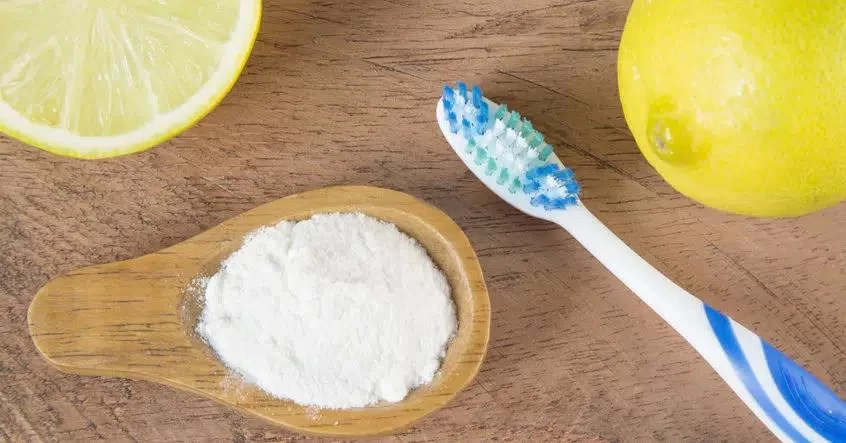
- Understanding Baking Soda for Teeth Whitening
- Safe Methods to Use Baking Soda on Teeth
- Potential Risks and How to Avoid Them
- Real-Life Examples and Personal Experiences
- Recommendations for Best Products and Services
1. Understanding Baking Soda for Teeth Whitening
Baking soda, also known as sodium bicarbonate, is a popular home remedy used for natural teeth whitening. Its mild abrasive properties help gently scrub away surface stains caused by coffee, tea, or smoking. Unlike harsh chemical whiteners, baking soda works by physically removing stains rather than bleaching the teeth, making it a favored option for those seeking a more natural approach.
However, understanding how baking soda interacts with your teeth and gums is critical. While it can brighten your smile, misuse or overuse may lead to enamel damage or gum irritation. This is why learning how to whiten teeth with baking soda safely is essential for effective and lasting results.
Moreover, baking soda’s alkaline nature helps neutralize acids in the mouth, which can protect against tooth decay and promote oral health. But, this benefit should be balanced with proper application techniques, which we’ll explore next.
1.1 The science behind baking soda’s whitening effect
The abrasive action gently lifts discolorations on the tooth surface without stripping the enamel. Baking soda’s mild alkalinity also inhibits bacterial growth, reducing plaque buildup. This combination supports a brighter, healthier smile when used correctly.
1.2 Why not just use any toothpaste with baking soda?
Many commercial toothpastes contain baking soda mixed with other ingredients that optimize cleaning while minimizing abrasiveness. Pure baking soda, if applied incorrectly, might be too harsh if used daily or vigorously.
2. Safe Methods to Use Baking Soda on Teeth
To whiten teeth with baking soda safely, follow these practical steps:
2.1 Frequency and preparation
Limit baking soda use to about two or three times per week to avoid enamel wear. Mix half a teaspoon of baking soda with water or hydrogen peroxide to create a paste. Apply gently using a soft toothbrush and brush for no longer than two minutes each time.
2.2 Combining baking soda with other natural ingredients
For enhanced whitening, some people add a few drops of lemon juice or coconut oil to baking soda. While these natural additives can boost effects, they should be used cautiously—acidic lemon juice can erode enamel if overused, so it’s best sparingly and not in daily routines.
2.3 Aftercare for your teeth
Always rinse thoroughly after brushing with baking soda and follow up with a fluoride toothpaste to help remineralize enamel. Maintain a consistent oral hygiene routine that includes flossing and regular dental checkups.
3. Potential Risks and How to Avoid Them
Despite its benefits, improper use of baking soda can lead to some issues:
3.1 Enamel erosion
Because baking soda is abrasive, excessive or aggressive brushing can wear down enamel, making teeth more sensitive and vulnerable to decay.
3.2 Gum irritation
Applying baking soda paste too close to the gums or brushing too hard can cause soreness and inflammation.
3.3 Masking underlying dental problems
Surface whitening doesn’t address deeper stains or dental conditions. If discoloration persists, it’s important to consult a dentist rather than rely solely on baking soda treatments.
3.4 How to minimize risks
Use baking soda sparingly and gently. If you experience any sensitivity or irritation, discontinue use and seek professional advice. Choosing commercially formulated baking soda toothpastes may also provide safer alternatives.
4. Real-Life Examples and Personal Experiences
Consider the story of Emma, a coffee lover who noticed yellowing on her teeth after years of daily consumption. She started using a baking soda paste twice a week, brushing gently for two minutes each session. After six weeks, Emma reported a noticeably brighter smile with no sensitivity or gum issues, confirming the effectiveness of safe baking soda use.
Conversely, Jake shared a cautionary tale—after brushing with pure baking soda daily and aggressively, he developed enamel sensitivity. Only after consulting his dentist and adjusting his routine did his teeth recover.
These examples underscore the importance of following safe whitening methods and listening to your body’s signals.
5. Recommendations for Best Products and Services
If you want to explore the safest and most effective options for teeth whitening, including those involving baking soda, Dentistry Toothtruth offers a curated selection of trusted products and professional services tailored to your needs. From gentle baking soda-based toothpastes to expert advice on oral care routines, their platform helps you find exactly what suits your smile and health goals.
Remember, combining at-home remedies like baking soda with professional dental guidance ensures the best outcome while protecting your oral health.







 Groton Dental Group4.0 (288 review)
Groton Dental Group4.0 (288 review) Metropolitan Pediatric Dental Associates: North Oaks4.0 (290 review)
Metropolitan Pediatric Dental Associates: North Oaks4.0 (290 review) LONG BEACH TOTAL DENTAL CARE4.0 (93 review)
LONG BEACH TOTAL DENTAL CARE4.0 (93 review) Surya P. Dhakar DDS, PC4.0 (250 review)
Surya P. Dhakar DDS, PC4.0 (250 review) Colin A Gustus DMD4.0 (127 review)
Colin A Gustus DMD4.0 (127 review) The Smilist Dental Syosset4.0 (354 review)
The Smilist Dental Syosset4.0 (354 review) The Importance of Oral Health Education During Pregnancy for a Healthy Pregnancy
The Importance of Oral Health Education During Pregnancy for a Healthy Pregnancy Best Tips for Brushing Your Teeth Properly for Healthy Gums: Essential Techniques for Oral Health
Best Tips for Brushing Your Teeth Properly for Healthy Gums: Essential Techniques for Oral Health Why Skipping Dental Checkups Can Lead to Bigger Oral Health Problems
Why Skipping Dental Checkups Can Lead to Bigger Oral Health Problems Advantages of Porcelain Dental Restorations
Advantages of Porcelain Dental Restorations How Can Diabetes Cause Tooth and Gum Problems? Preventing and Managing Oral Health Issues
How Can Diabetes Cause Tooth and Gum Problems? Preventing and Managing Oral Health Issues Healthy Habits for Promoting Good Oral Health and Hygiene: Tips for a Healthy Smile
Healthy Habits for Promoting Good Oral Health and Hygiene: Tips for a Healthy Smile